
Today marks the 90th anniversary of the June 7th, 1929 violence at the Loray Mill Strike in Gastonia, North Carolina. The strike started in April of 1929 with the arrival of the National Textile Workers Union. The workers at the mill began striking for their demands. On June 7th sheriff’s deputies raided tents set up near the mill by striking workers. Violence ensued, and Police Chief Orville Aderholt was killed.
Just a few months after the culmination of the Loray Mill Strike, in September of 1929, Ella May Wiggins, a 29-year-old working mother and strike organizer, was killed by a mob of men trying to run the strikers out of town. The union was preparing for a large rally at which Ella May Wiggins would sing her ballads. On the way to the meeting, Ella May and other union members were attacked by anti-strikers. Ella May was one of many mill women and girls who protested the working conditions, hours and little pay in the Gaston County Mills in 1929. Often overlooked, the women working in the mills had a huge impact on the future of labor organizing in the South.
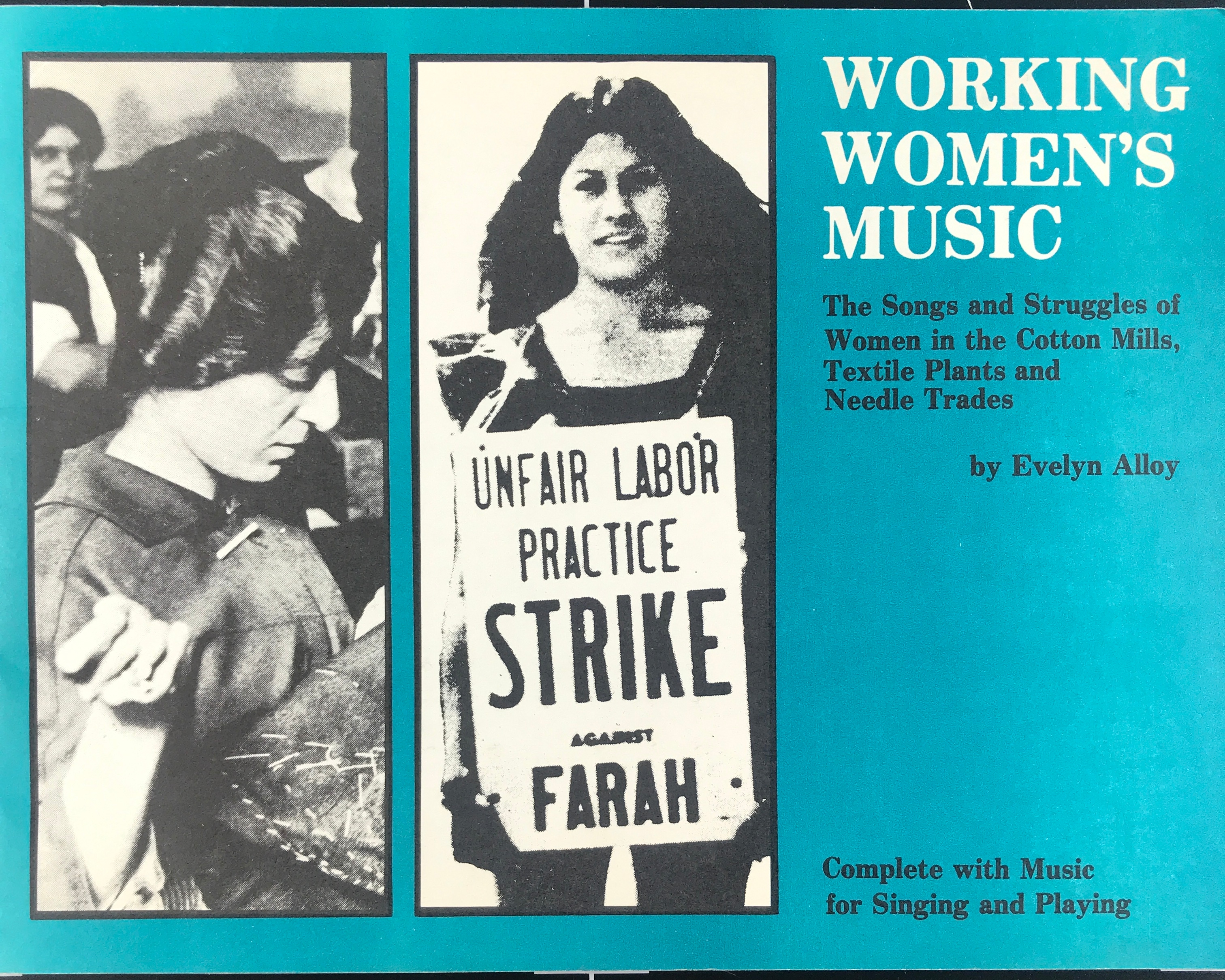
Ella May’s legacy lives on in the protest songs and ballads she wrote and sang. Her most popular protest song is “Mill Mother’s Lament,” a ballad covered by Pete Seeger on the album American Industrial Ballads.
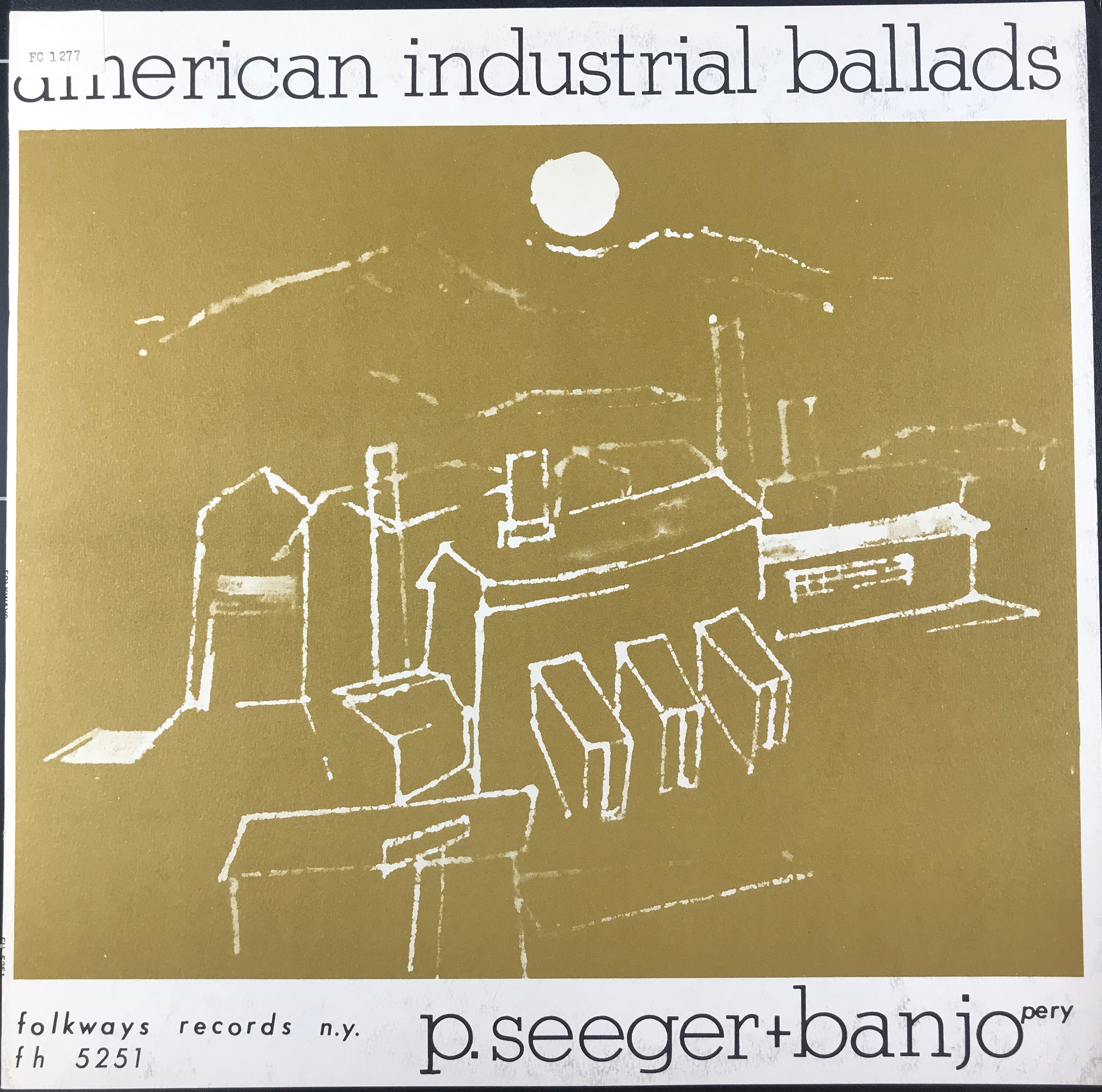

She also penned songs such as “The Big Fat Boss and the Worker” and “Up in Old Loray,” that were sung at union meetings and rallies. Some accounts say that Ella May did not write “Up in Old Loray,” but the lyrics in the Archie Green Collection have Ella May credited as the writer. Handwritten and typed copies of the lyrics to a few of her songs can be found in the Archie Green Papers.

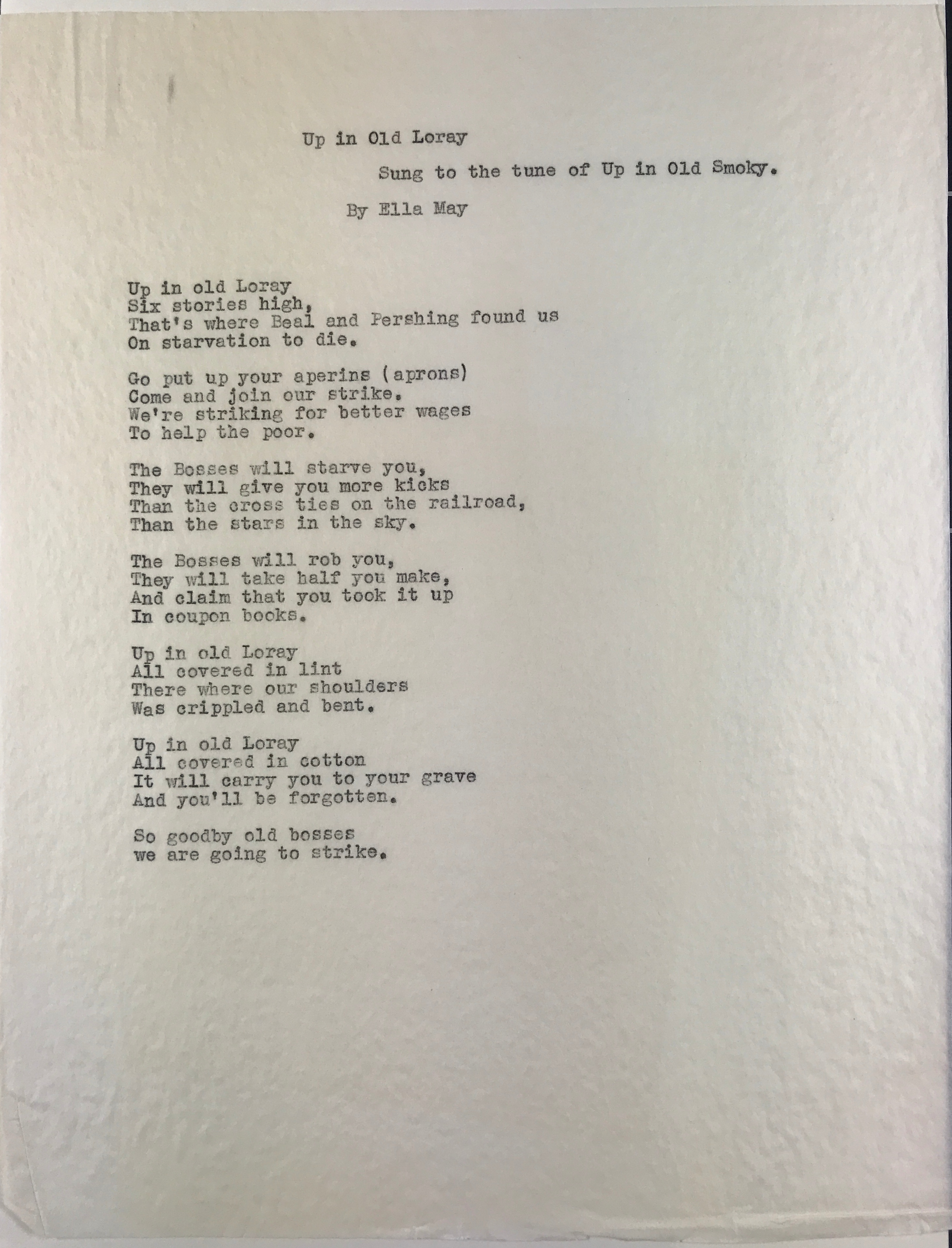
Many of the mill workers that fought for better working conditions during the strikes in 1929 will go unnamed. We are lucky to have Ella May’s songs as a reminder of her spirit and tenacity.
If you are looking to learn even more about Ella May Wiggins, check out The Southern Historical Collection’s oral histories of Ella May’s daughters, Millie Wiggins Wandell and Charlotte Wiggins. These tapes were digitized and are streaming online thanks to our generous grant from the Andrew W. Mellon Foundation.
Cox, Annette. “The Saga of Ella May Wiggins.” Southern Cultures, The University of North Carolina Press, 4 Oct. 2015, muse.jhu.edu/article/594509. Web. 7 June 2019.
Huber, Patrick. “Mill Mother’s Lament: Ella May Wiggins and the Gastonia Textile Strike of 1929.”Southern Cultures, vol. 15, no. 3, 2009, pp. 81-110. Web. 7 June 2019.
Jones, Loyal. “On the Death of Union Organizer and Balladeer Ella May Wiggins, A Tale of Two Families.” Review of Book. Appalachian Journal, vol. 43, no. 3-4, 2016, pp. 252–262. Web. 7 June 2019.
McShane, Chuck. “Tar Heel History: The Loray Mill Strike.” Our State Magazine, 17 May 2015, www.ourstate.com/loray-mill-strike/. Web 7 June 2019.
Category: Mellon Foundation
Joan Fenton and Documenting Southern Tall Tales
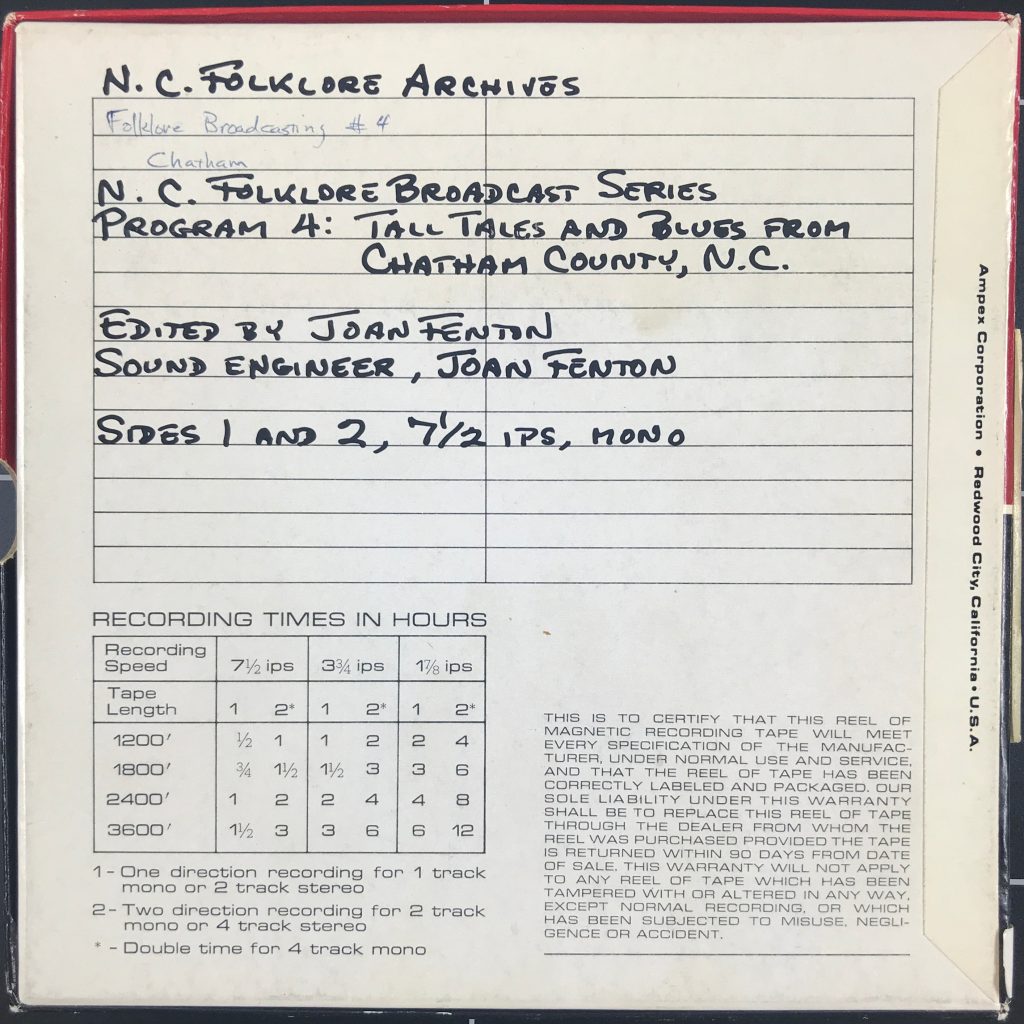
Joan Fenton was a folklorist and performer who earned a master’s degree in folklore from the University of North Carolina Chapel Hill. The sound recordings in this collection include interviews, oral histories, songs, and tall tales from artists and musicians throughout North Carolina, South Carolina, West Virginia, and Louisiana. She also recorded a gospel group at an African American church service near Princeton, West Virginia. Those recordings include sermons and testimonies from members of the congregation. Thanks to our generous grant from the Andrew W. Mellon Foundation, the audio items in the Fenton collection are available and streaming online from the finding aid.
Fenton wrote the thesis for her master’s on Howard Cotten, a black tall-tale teller from North Carolina. These recordings include songs, tales, and interviews with Mr. Cotten and others like Laura Lea, a quilter from Chatham County, NC and Cotton’s friend and cousin, Willie Brooks. In the interviews, Cotten sings and tells stories about hitchhiking, ghosts, possum hunting, talking dogs, seeing a train for the first time and more (FT-20015/890-908).

The above interview is streaming through the finding aid.
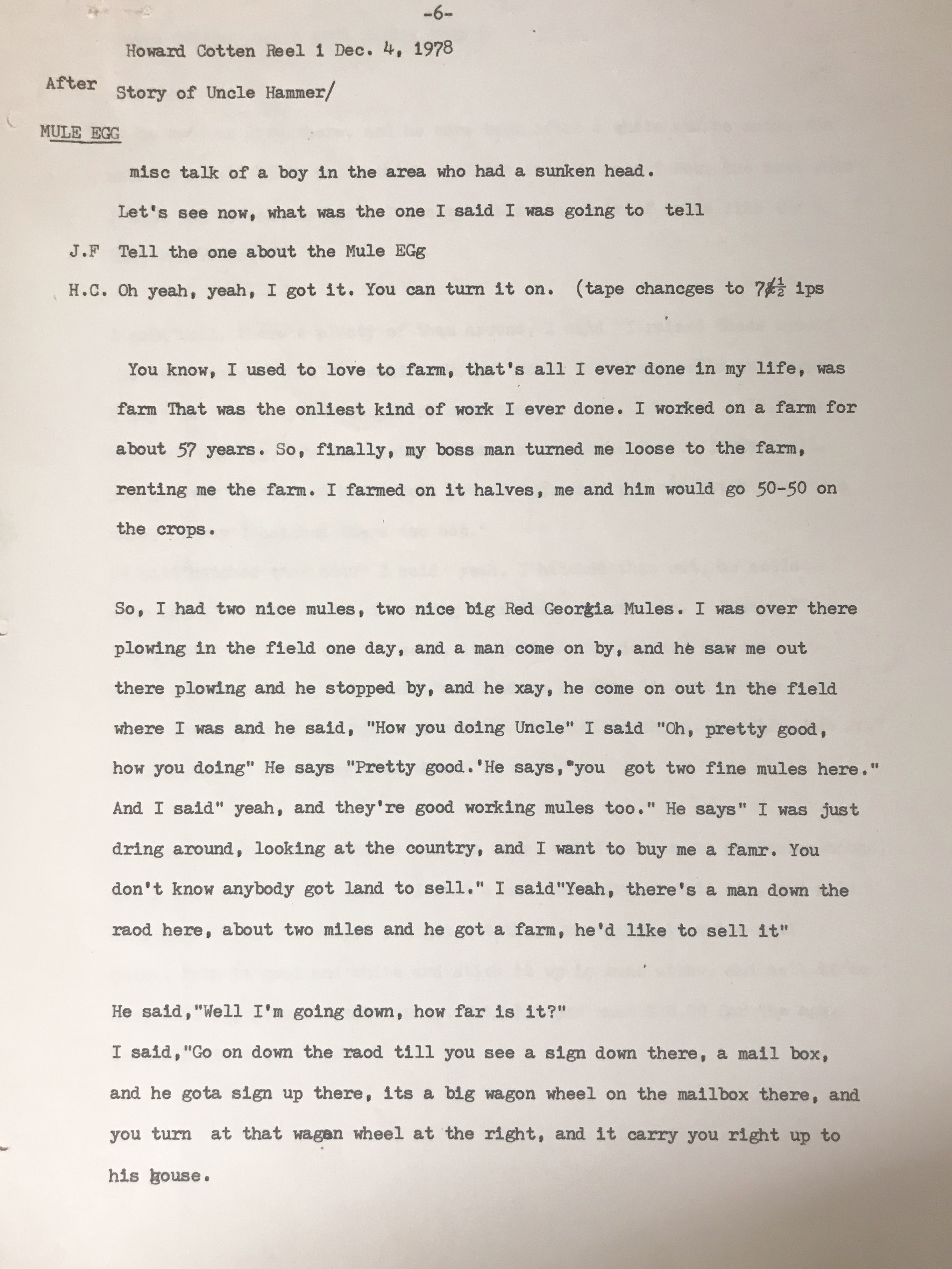
Fenton was the editor and sound engineer on an episode of the UNC Folklore Broadcast featuring a recording of Howard Cotten and Willie Brooks telling tall tales or lies, as Fenton calls them in the introduction to the broadcast, along with blues songs and additional explanation and commentary in between songs and stories.
Some of my favorite audio recordings in the collection are from the John Henry Folk Festival in 1978. She gathered many interviews from this festival with musicians and attendees. She asks questions about the folk festival, why people attend this specific festival, what the blues mean to them, the importance of gospel music at a festival such as the John Henry festival, and many others. The answers she gets to her questions are part of larger conversations that are still relevant today. Some of the folks interviewed include Sparky Rucker, Ron Wilkerson, Hazel Dickens, Phyllis Boren, The Badgett Sisters, and Pigmeat Jarrett.
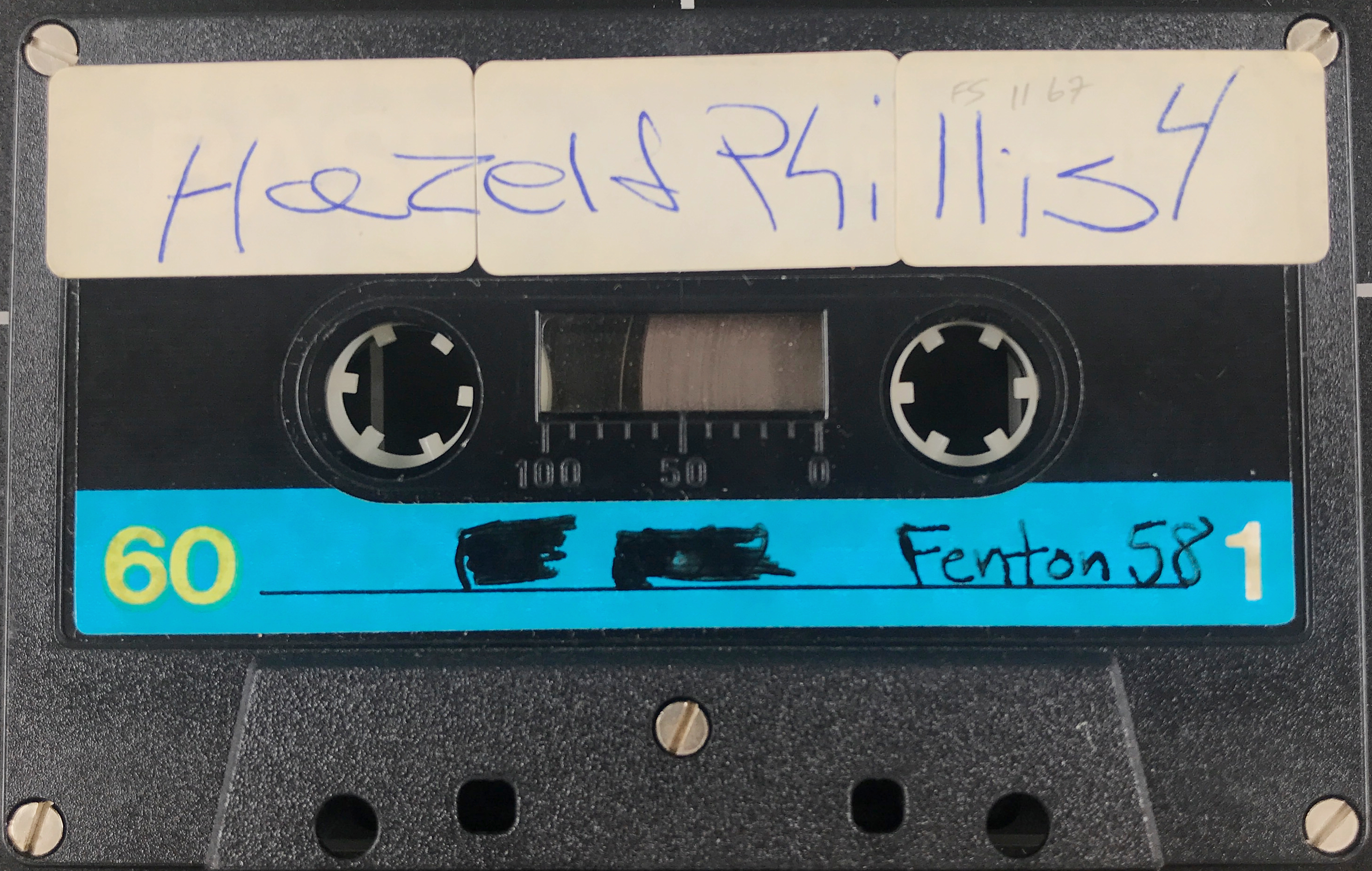
Finally, Fenton took part in video documentation of blues musicians including videos of Willie Trice. Fenton is described as recording the videos. They are also accessible and streaming in the Southern Folklife Collection Moving Image Materials finding aid. (VOR-30002/110-111).
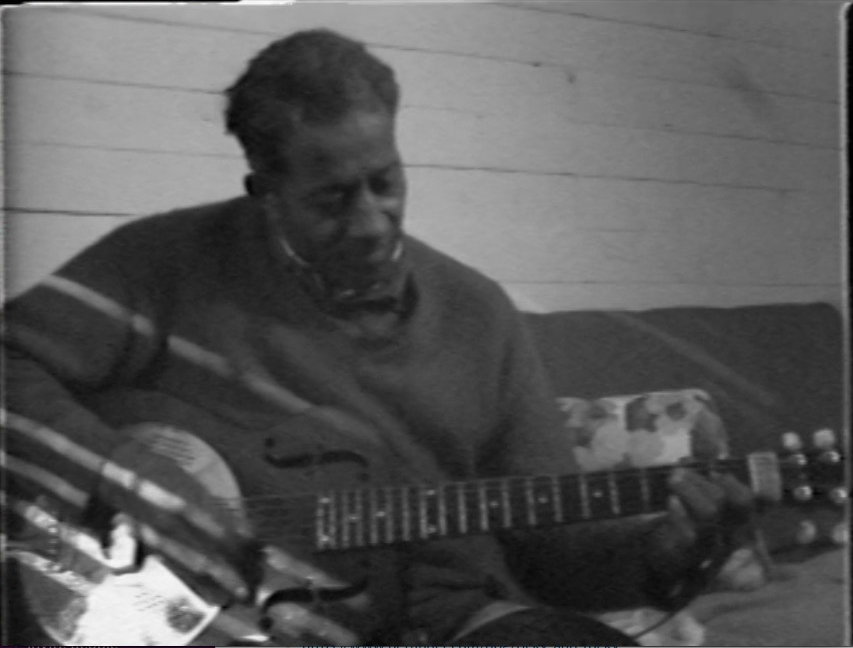
Fenton resides in Charlottesville, VA where she owns 9 retail stores. She is one of the organizers of Blues Week at the Augusta Heritage Workshop in Elkins, WV.
Happy 2019! A look back at 2018.
All of us at the Southern Folklife Collection want to wish you a very happy new year. 2018 was a very productive one for the SFC:
2018 was the second year of our partnership with YepRoc Records and saw the release of three new recordings. In February, we released Doc Watson, Live at Club 47 with a record release party at Club Passim featuring songwriter and 2017 IBMA Guitar Player of the Year Molly Tuttle accompanied by her bandmates in The Goodbye Girls, Allison de Groot, Lena Jonsson, Brittany Karlson and guitarist and singer Stash Wyslouch. Live at Club 47 documents Doc Watson in top form recorded in February 1963, between his first solo public performance at Gerdes Folk City in New York City in November 1962 and his breakthrough performance in August 1963 at the Newport Folk Festival. 55 years after the recording, Live at Club 47 reached #9 on Billboard’s Bluegrass Album Chart.
 In March we released a special 10” vinyl EP for Record Store Day, Tia Blake, Paris and Montreal Demos 1973-1976. Tia released only one record in her lifetime, Folksongs & Ballads, for a small record label in France. Her demos had briefly been available on a CD reissue by Water Records that had quickly gone out of print. We hated to see this material unavailable to a broader audience, and with both Tia’s and her mother Joan’s blessing, made the tracks available again on vinyl, newly remastered by Brent Lambert of Kitchen Mastering, from the SFC’s 24bit 96kHz transfers of the analog masters. The demos are intimate and beautifully sung in Tia’s rich melancholy voice. The recordings are some of our favorites in the collection.
In March we released a special 10” vinyl EP for Record Store Day, Tia Blake, Paris and Montreal Demos 1973-1976. Tia released only one record in her lifetime, Folksongs & Ballads, for a small record label in France. Her demos had briefly been available on a CD reissue by Water Records that had quickly gone out of print. We hated to see this material unavailable to a broader audience, and with both Tia’s and her mother Joan’s blessing, made the tracks available again on vinyl, newly remastered by Brent Lambert of Kitchen Mastering, from the SFC’s 24bit 96kHz transfers of the analog masters. The demos are intimate and beautifully sung in Tia’s rich melancholy voice. The recordings are some of our favorites in the collection.
July saw the release of Bluegrass Champs, Live from the Don Owens Show. These rare live 1950s radio broadcasts featured Scotty, Donna, Van, and Jimmy Stoneman of the Stoneman Family.

The recordings came from the legendary private collection of Leon Kagarise and were produced by Joe Lee of Joe’s Record Paradise. Live from the Don Owens Show reached #2 on Billboard’s Bluegrass Album chart.
At the end of July, we completed the implementation phase of Extending the Reach of Southern Audiovisual Sources, our 2015-2018 grant from the Andrew W. Mellon Foundation. The grant has been transformative, allowing us to implement large-scale preservation and access workflows for archival audio and video holdings of the Southern Folklife Collection. This August we started a new expansion phase of the grant to broaden the focus to all archival AV materials in the Wilson Special Collections Library and to pilot AV digitization services for partner institutions across the state through UNC Libraries’ North Carolina Digital Heritage Center.
Another key initiative has been providing access to our collections backlog. In 2018, brief online finding aids and library catalog records were created for many of the SFC’s hidden collections. We hope to complete this process and have all of the SFC’s collections discoverable in 2019. For an updated listing of our collections visit our website.
My thanks for your continued support! We are looking forward to 2019, which is the 30thAnniversary of the SFC’s official opening. We have a number of events and exhibits planned. More news to come.
Student Television Collection
Over the past two months, we have been processing and arranging the University Archives Student Television at the University of North Carolina at Chapel Hill collection (#40326) as part of the next phase of our generous grant from the Andrew W. Mellon Foundation.
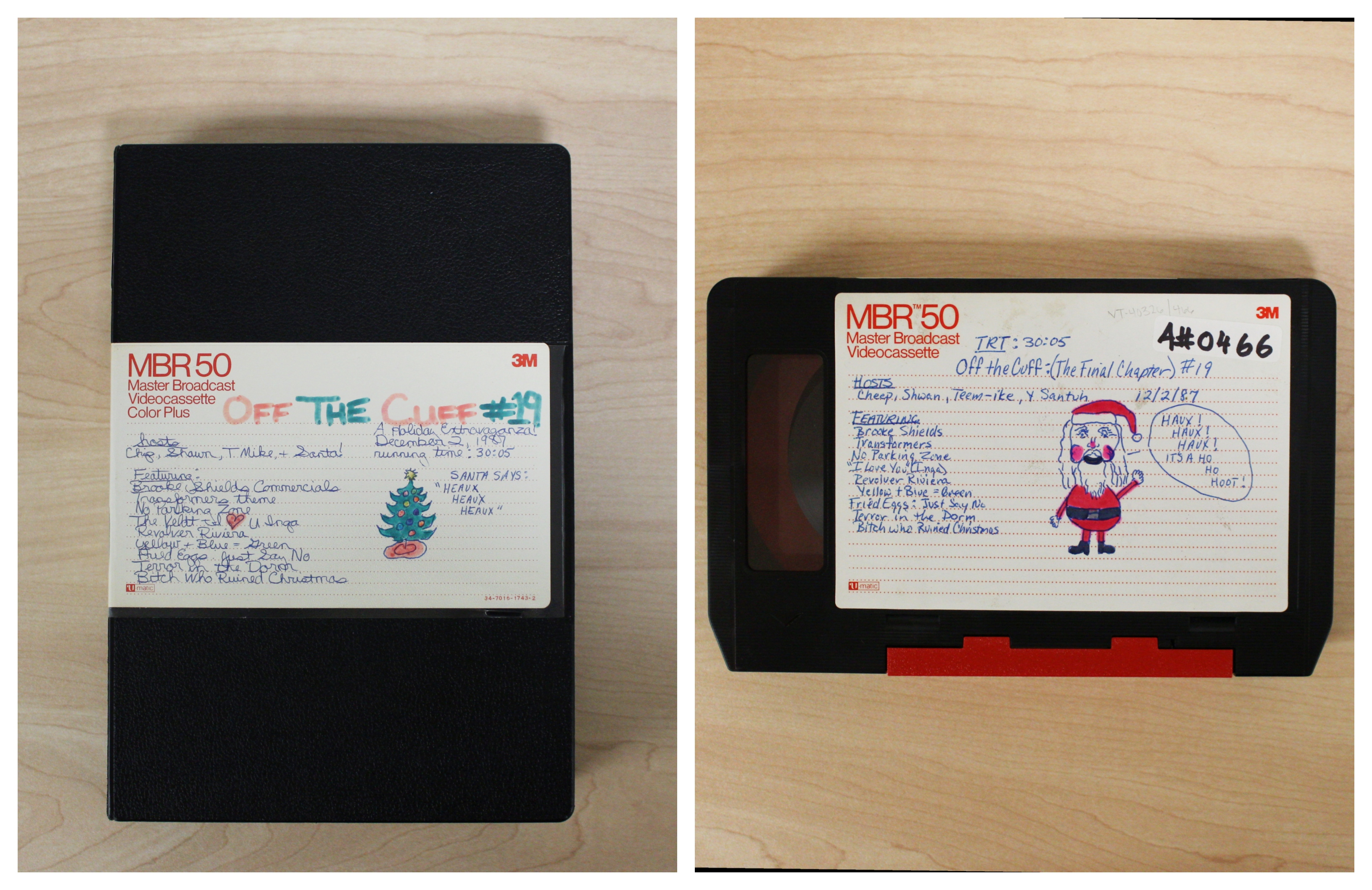
This collection of video recordings features original, student-produced shows, along with recordings of events and speeches around campus made by UNC Student Television between the years 1983-2010. There are more than 1,600 recordings in the collection on U-matic, VHS, and mini-DV analog formats. A few shows are still running today including General College and Late Night STV. UNC Student Television is a completely student-run television station for the University of North Carolina at Chapel Hill. Founded in 1983, it is now one of the largest media organizations on campus.
The finding aid for this collection will be available soon, but until then we thought we’d give you some highlights.
Off the Cuff is a long running sketch comedy show, and the STV collection features around 200 items with related Off the Cuff content. Pictured above and below is a sample of U-matic and VHS tapes found in the collection, all featuring Off the Cuff shows and segments.

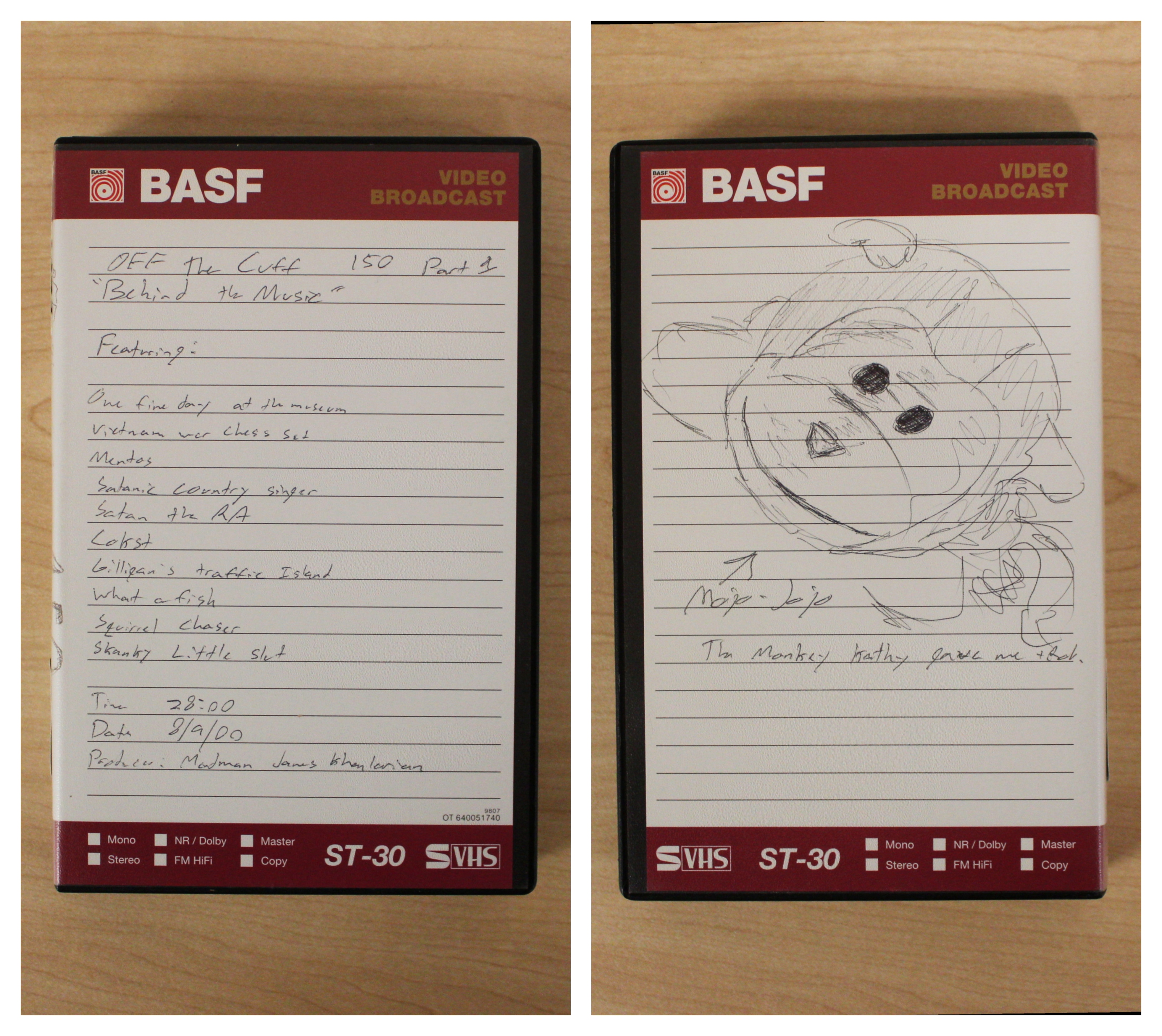
General College is another long running show featured in the collection. STV describes it as a “surreal melodrama with comedic elements,” and episodes are sequential by season. Below is a short clip of the General College intro from episode #14 produced in the fall of 1988 (VT-40326/104).
Preservation Update – new hires and online recordings
Our efforts to expand and improve on audiovisual preservation continue here in Wilson Library, with the recent hiring of our third Audio Engineer, Dan Hockstein, and two Audiovisual Archives Assistants, Mel Meents and Andrew Crook. These positions have been funded by the Andrew W. Mellon Foundation as part of our Extending the Reach of Southern Audiovisual Sources: Expansion grant. This phase of the project scales the digitization and preservation work we’ve done for the SFC to all of Wilson Special Collections AV.
Andrew, Mel and I have recently moved into a new space in Wilson Library’s Digital Production Center, and we now have an official AV Lab to call our own in addition to the Ben Jones and John M. Rivers Jr. audio studios. Mel and Andrew have stayed busy working across collections in the building, producing item-level descriptions for videotapes in the University Archives’ Student Television at the University of North Carolina at Chapel Hill collection (#40326), prepping films for cool storage from the Florentine Films Archives (#20193), and managing monthly pre and post-digitization tasks.
Audio and video equipment in our new AV lab location
The audio engineers have been running tapes and discs, covering large sections of the Bruce Bastin Collection (#20428), Paul Brown Collection (#20382), William R. Ferris Collection (#20367), Apollo Records Collection (#20539-z), and North American Traditions Collection (#20503) among many others. Since August we have digitized, preserved, and provided online streaming to over 1,300 audio recordings.
A batch of 1/4" audiotapes waiting digitization
Our Technical Services department has also been working hard to decrease the number of collections in the SFC backlog, creating collection level finding aids for over 70 collections! Our AV Archivist Anne Wells and processing assistants, Rae Hoyle and Emma Evans, have completed or provided additions to a number of SFC finding aids, including the Berea College Collection of John Lair and Lester McFarland Recordings (#20281), Nancy Hamilton Collection on Molly Sequoia (#20125-z), and North Carolina Symphony Recordings (#20390-z).
Our photo stand for photographing items in the collection
In early 2019 we look forward to sending off our next batch of video priorities for digitization to our vendor. These items will be joined by recordings from a few of the regional institutions we have partnered with as part of an initiative in the grant to provide services to external collections, including Appalachian State University and North Carolina State Archives. More on that soon!
First Impressions: Arhoolie Records

“First Impressions“ is an ongoing series on the “first records” of several independent record labels releasing folk, blues, bluegrass, country, and other vernacular musics. Drawing from records and other materials in the Southern Folklife Collection, the focus of this virtual exhibition is on the albums that started it all for these labels in the LP era.
THE ALBUM
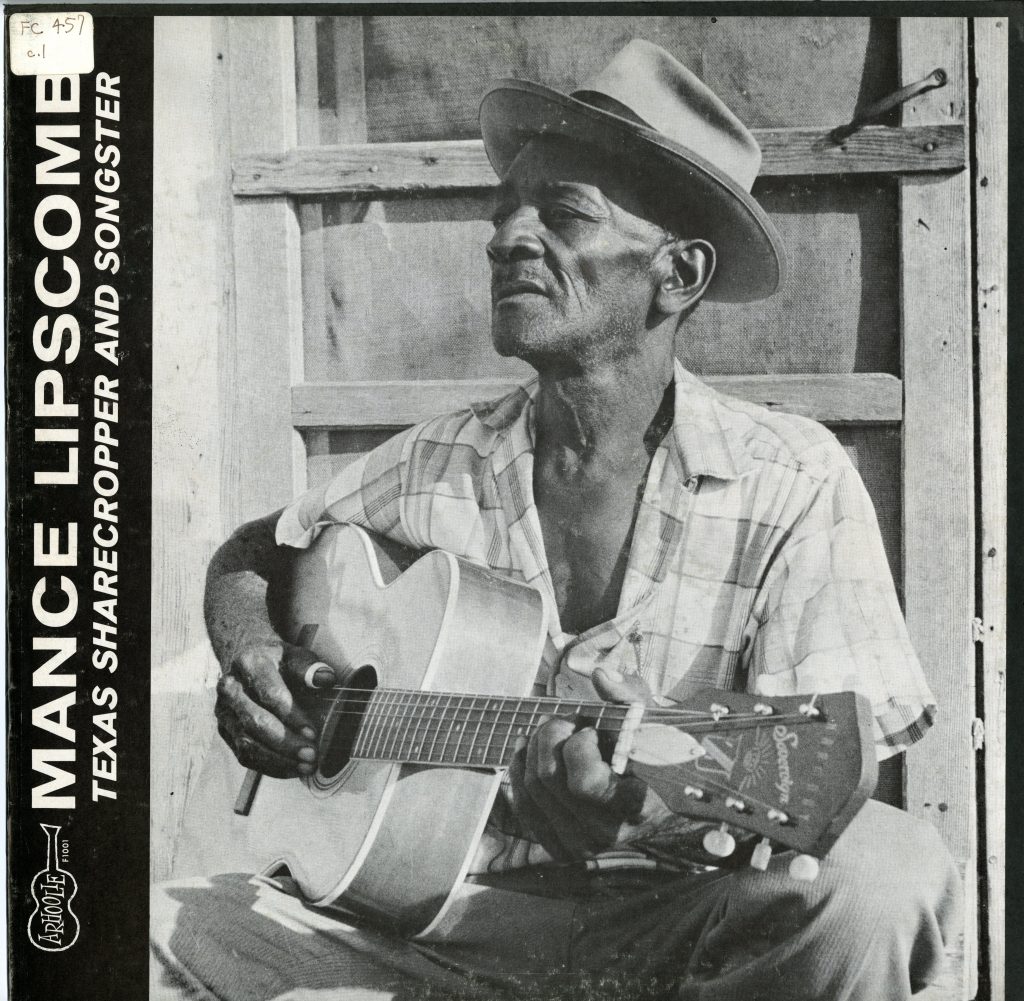
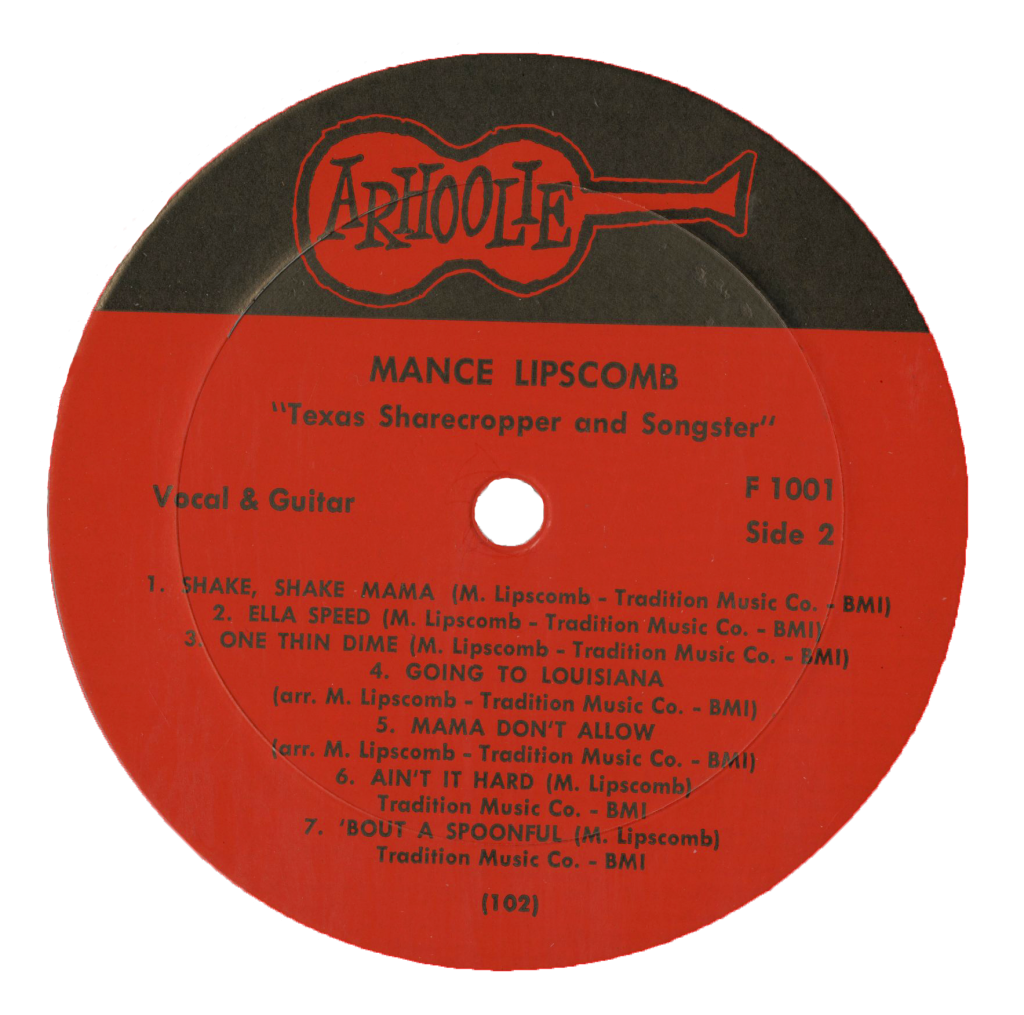
In 1959, Chris Strachwitz, a high school teacher living in California, set out for Texas hoping to meet and record one of his heroes, Lightnin’ Hopkins. Unable to find him, he resolved to return the next year, this time with a longer list of musicians to find and record. He had been buying and selling old 78 rpm records for several years, providing him with a little extra cash to buy some basic recording equipment. In 1960, with Mack McCormick’s help and a few tips from people along the way, he managed to meet Mance Lipscomb at his Navasota home. Texas Sharecropper and Songster is the product of recordings made that day, with the 65-year-old singing 14 songs he had picked up over a lifetime of playing music for friends, family, and both white and African-American dances. This impromptu session was Lipscomb’s first recording, and Strachwitz was initially unimpressed: “To be honest, I didn’t like his music that much – I love tough, nasty, old blues, and Mance was so pretty” (Goodwin, 1981). Of course, as Mance’s music elevated Arhoolie Records to a full-time venture, it must have grown on him: Lipscomb recorded 5 more albums for the label before his passing in 1976.
Listen to “Shake, Shake, Mama” from Side 2 of Texas Sharecropper and Songster:
The label

Arhoolie Records takes its name from a word for a field holler, more often referred to as a “hoolie.” Chris Strachwitz founded the label in 1960, ultimately establishing its headquarters in El Cerrito, California. Arhoolie primarily released original recordings of living musicians, whereas two of Strachwitz’s later ventures, Blues Classics and Old Timey Records, were devoted to reissues of older recordings. Chris Strachwitz remained at the helm for the label’s lifetime, continuing to record and release all varieties of music, and leading the transition into the CD and digital realms. In May of 2016, Smithsonian Folkways acquired the Arhoolie catalog, and Texas Sharecropper and Songster was one of the first batch of albums re-released by the new label owners.
The Founder
The founding of Arhoolie Records marked Chris Strachwitz’s first big step into the world of traditional music, but the label will be far from his only legacy. After moving to the United States from Germany in 1947, Strachwitz could hardly seem to stay away from the music. His passion for collecting 78s evolved into the Arhoolie Foundation, a nonprofit devoted to preserving and sharing his extensive collection. He started the Old Timey and Blues Classics labels soon after founding Arhoolie to release out-of-print recordings of blues and old-time musicians. Through Arhoolie, he published the Arhoolie Occasional and The Lightning Express, periodicals devoted to spreading information about blues music and recordings. Through a long-time friendship with documentary filmmaker Les Blank, he supported the production of documentaries on Arhoolie musicians like Mance Lipscomb and Lightnin’ Hopkins. Below is a segment from a 1981 interview by Strachwitz with Moses Asch, founder of Folkways Recordings, from the Archie Green Collection (20002).
Chris Strachwitz (CS): I’d like to get some of this on tape about your feelings in regard to reissuing old material or, that is, recordings that are really historical that have not been used by the major labels. You were certainly one of the first people to take a stand on this, weren’t you?
Moses Asch (MA): That’s right.
CS: What’s your attitude on this?
MA: Well, there’s a section in the Constitution of the United States, in which it says, “People have a right to know.” It’s part of the copyright, first copyright law of the land. And in there it says that no one is permitted, if they want the people to benefit, to take something out of circulation. If you buy a car, the manufacturer must have a replacement part as long as the car is operational. Otherwise, they lose all rights to the car. And I apply that same attitude to recordings. Once I feel that the manufacturer or the producer or the one that had the recordings originally issued the record, and then the record is not available, and it’s left out of their catalog, they throw that record into public domain and anyone can use it.
Listen to the full interview here. Digitization and streaming access to this recording were made possible through the SFC’s ongoing audiovisual preservation grant from the Andrew W. Mellon Foundation:
| SFC Audio Cassette FS-20002/11183 (digitized) |
Tape 28: Chris Strachwitz interviews Moses Asch, 1981Audiocassette
|
The local connection

Elizabeth Cotten was born in Chapel Hill in 1893, the youngest of five children. After moving around the Southeast for many years, she settled as an adult in the Washington, D.C. area. Eventually, she came to work for the Seeger family of musicians, who, after hearing her play, helped expose her unique performance and songwriting abilities to the world. Most famous for her composition “Freight Train,” Cotten released just four solo albums in her lifetime: a series of three LPs for Folkways and Live!, a 1983 collection of live performances on Arhoolie Records.
Show me more!
The Southern Folklife Collection holds plenty of additional Arhoolie Records-related documentation, as well as a significant portion of the Arhoolie Records catalog on LP and other formats. Check out a few other documents and collections of interest below or search the collection yourself.
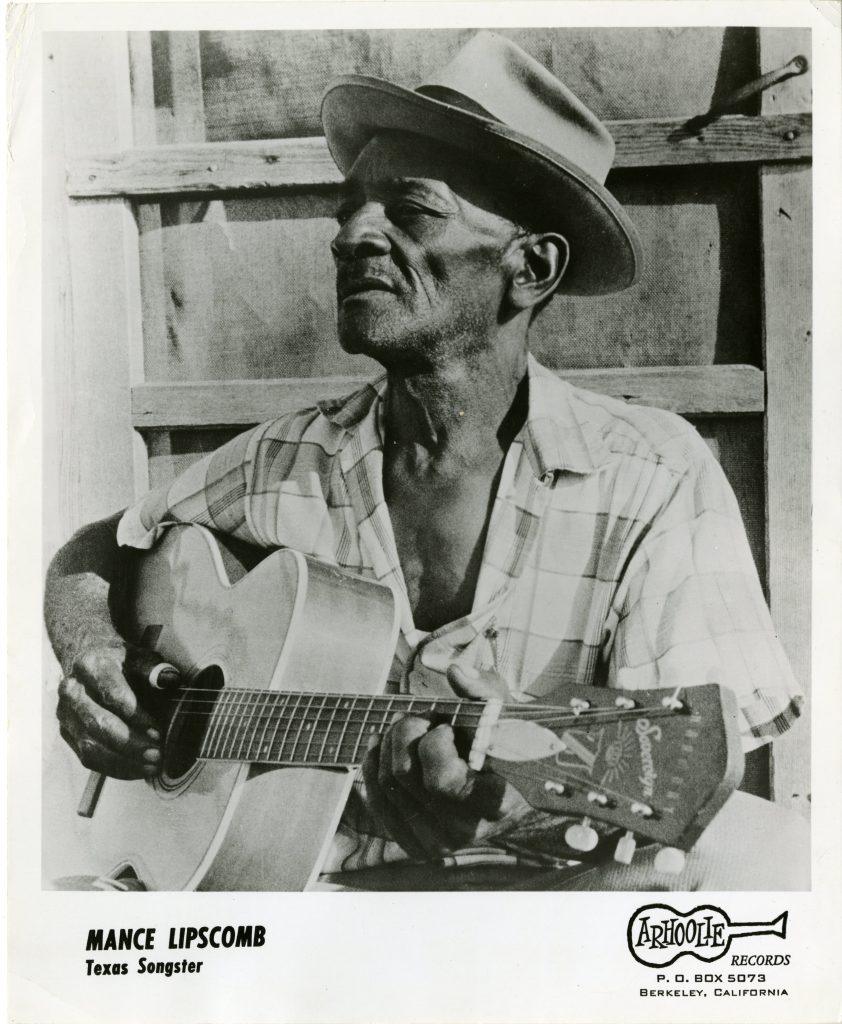
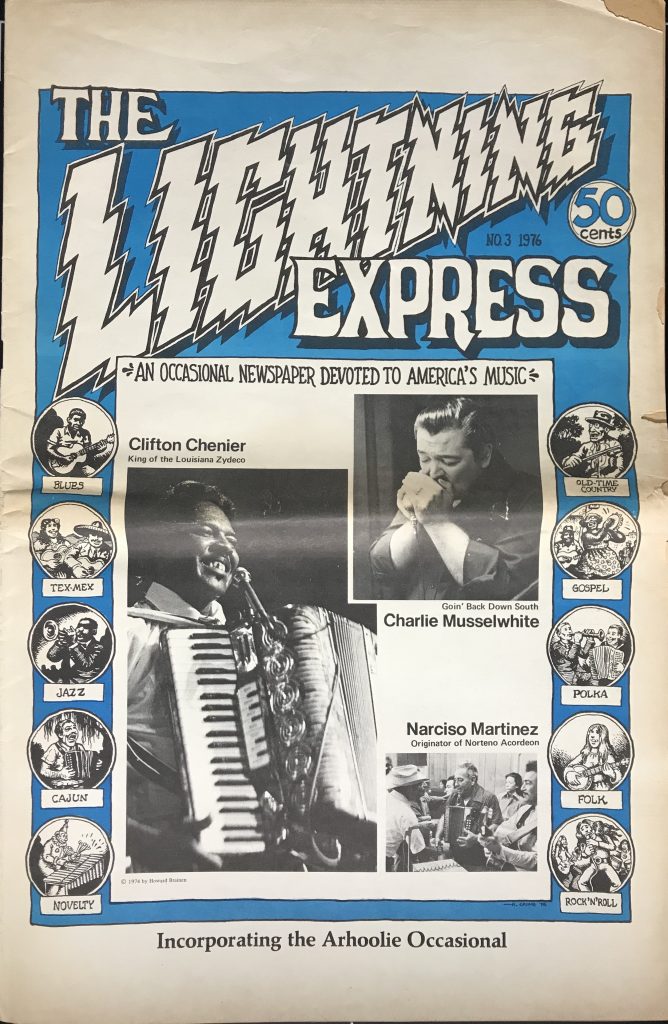

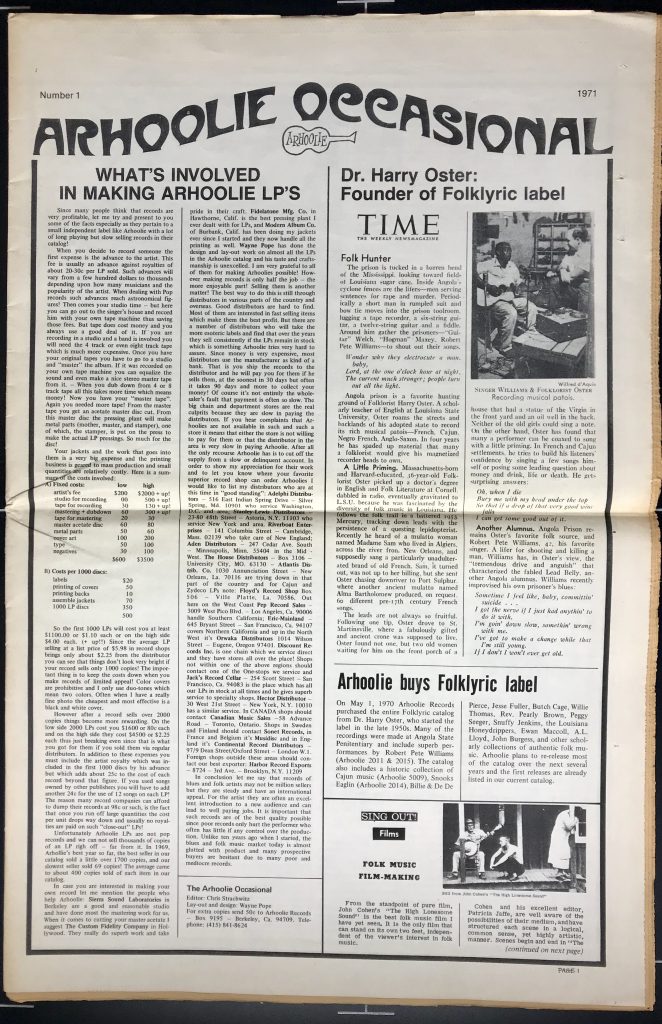
Latest video roundup: From Tennessee to Hawaii
As the AV Preservation team waits on the next large batch of digitized video content (check-in later this summer!), a small selection of videos has been described and made available for streaming in the last week, including:
VT-20004/1: 5th Annual Tennessee Grassroots Days
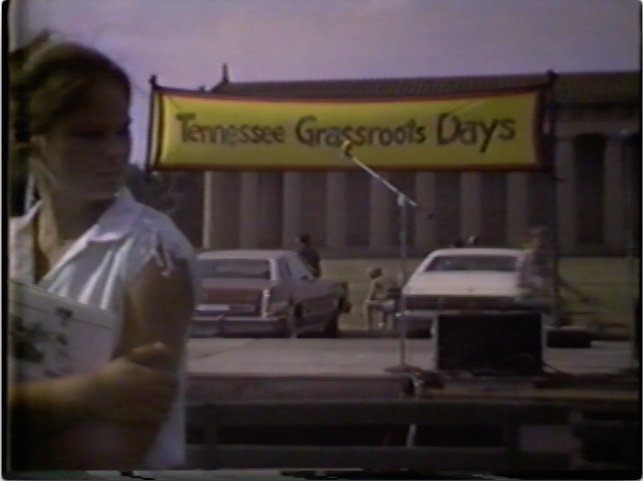 Held in Nashville’s Centennial Park in 1980, this video features performances by Leola Cullum, Gospel Stirrers, Bud Garrett, Lizzie Cheatham, Nimrod Workman, Jo-El Sonnier with Frazier Moss, Sam’s Ramblers, and Hazel Dickens. Also included are shots of the festival grounds, with demos spanning quilt-making to beekeeping.
Held in Nashville’s Centennial Park in 1980, this video features performances by Leola Cullum, Gospel Stirrers, Bud Garrett, Lizzie Cheatham, Nimrod Workman, Jo-El Sonnier with Frazier Moss, Sam’s Ramblers, and Hazel Dickens. Also included are shots of the festival grounds, with demos spanning quilt-making to beekeeping.
Additional footage, PSAs and television coverage of annual Grassroots Days through the 80s can be found in the Southern Folk Cultural Revival Project Collection (#20004)
VT-20466/5: James “Son Ford” Thomas at Bacchus, Newark, Del., winter 1978
I highlighted a different James “Son Ford” Thomas video in the Robert Bethke Collection (#20466) in a previous post, in which he performed with George Thorogood and Ron Smith. Primarily playing solo, but joined by Ron Smith eventually, this performance takes place at the University of Delaware’s Bacchus Theater.
VT-20018/1 & VT-20018/2: Walter Raleigh Babson at UNC Chapel Hill with Andy Cahan, 1987
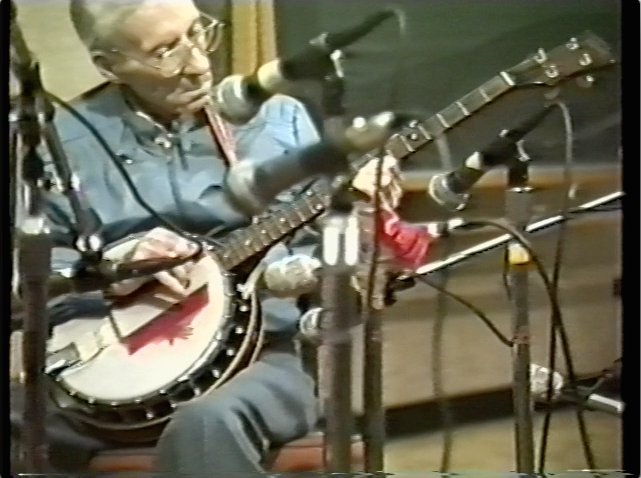 Walter Raleigh Babson performed twice at Chapel Hill in 1987, including his last public concert with Andy Cahan on November 12th (VT-20018/2), 26 days before passing away. Along with the performance, this tape includes a retrospective of Babson’s life through home movies and photographs.
Walter Raleigh Babson performed twice at Chapel Hill in 1987, including his last public concert with Andy Cahan on November 12th (VT-20018/2), 26 days before passing away. Along with the performance, this tape includes a retrospective of Babson’s life through home movies and photographs.
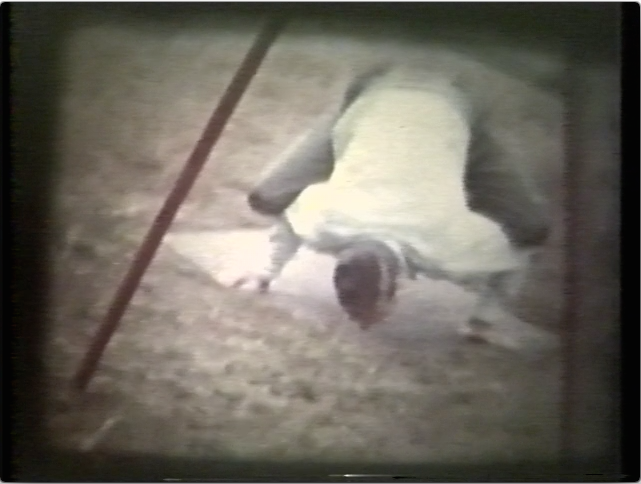
VT-20018/1 documents Babson’s performance earlier in 1987 at Gerrard Hall on March 28th for the Southern Accents Fine Arts Festival at UNC, where he is again joined by Andy Cahan. Additional audio recordings and interviews of Babson can be accessed in the Andy Cahan Collection (#20018).
VT-20379/20 part 1 and part 2: Gene Bluestein with Nona Beamer on Folk Sources in American Culture, 1986
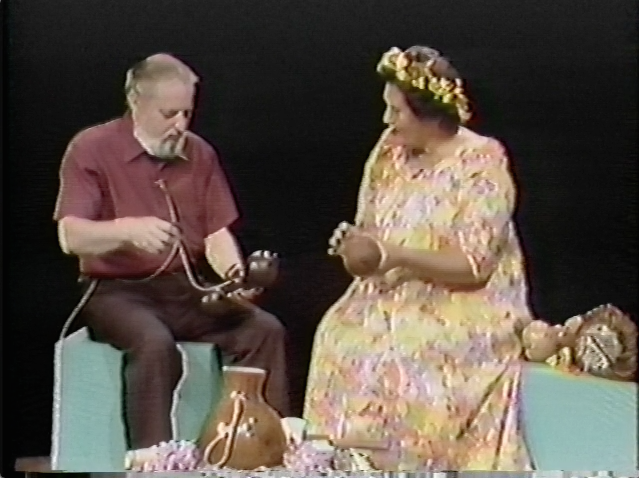
Gene Bluestein hosted a number of guests on his series Folk Sources in American Culture while at California State University. Many of these segments can be found in the Gene Bluestein collection (#20379). On this particular day, he hosted Nona Beamer, who shared examples of instruments and related Hawaiian folk traditions.
SFC Hits 20,000 Streaming Recordings!

With the more recent addition of video content and the increase in production in our audio studios since starting our Andrew W. Mellon Foundation grant in August 2015, there’s a lot to explore online. Since it might be overwhelming to know where to start, I thought I’d share my top 5 countdown of memorable moments from watching and listening over the last couple of months.
5. The time Dr. William R. Ferris panned across the Mississippi and framed the New Orleans skyline, from the vantage point of what is now the Crescent City Park in the Bywater (one of my favorite places in N.O!), while documenting his trip on the Delta Queen in 1987 (VT-20367/24).
Starts around the 33 minute mark
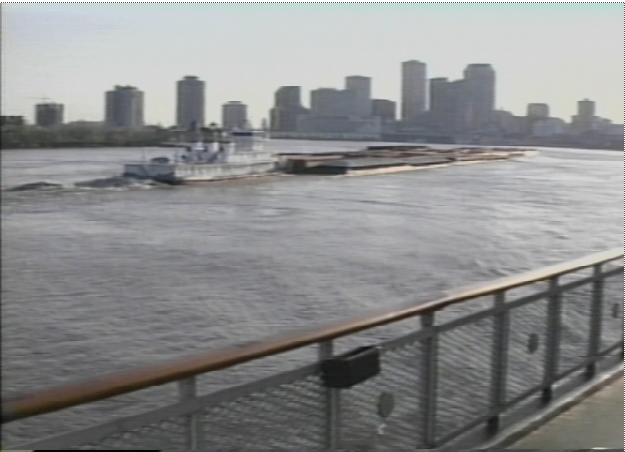
Delta Queen, 17-24 April 1987: tape 1 of 4
Dr. William R. Ferris Collection, 20367
Video8
4. Finding this disc in the stacks during a conservation survey and spending many weeks curious about its contents before finally having it digitized. I’d be very curious if anyone knows the whereabouts of this band. (FD-20245/836)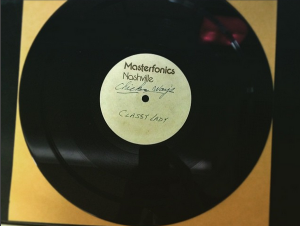
Chicken Way’s “Classy Lady ”
Goldband Recording Corporation Collection, 20245
Instantaneous disc
3. When James “Son” Thomas performed with George Thorogood and Ron Smith, and the video switcher employed some creative video effects (VT-20466/3)
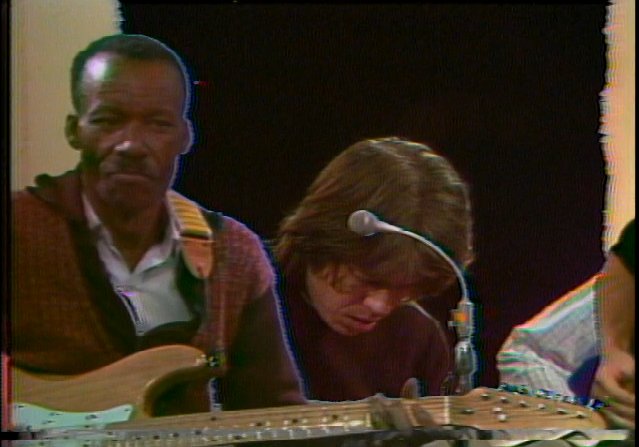 James “”Son Ford”” Thomas with George Thorogood and Ron Smith, 1978
James “”Son Ford”” Thomas with George Thorogood and Ron Smith, 1978
Robert D. Bethke Collection, 20466
U-Matic
2. This SFC department favorite featuring Hazel Dickens, Alice Gerrard, Mike Seeger, Tracey Schwartz and a beautiful sunny backdrop (VT-20006/2). Bonus music videos by unidentified bands at the end!
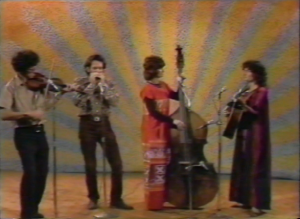
Woman Alive: Hazel Dickens and Alice Gerrard with Mike Seeger and Tracey Schwartz, November 1975
Alice Gerrard Collection, 20006
VHS dub from unknown format
LAST, BUT NOT LEAST….
1. When a nightmarish Barney joined a Mt. Airy dance contest (VT-20009/272). The beloved dinosaur from our imagination appears around 5:20 minute mark
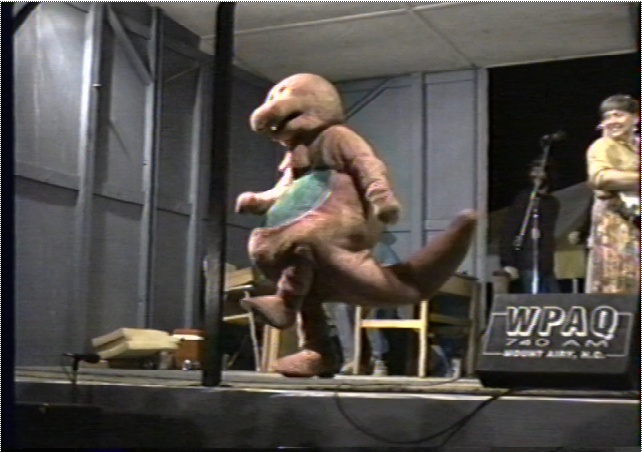
Mt Airy Fiddlers convention, dance contest Rufus Kasey, Molln part 2, 1997
Mike Seeger Collection, 20009
Video8
Happy Field Tripping!
Fiddling around on a snow day
 UNC Chapel Hill campus is closed today due to the weather, but thanks to the great work by the Audiovisual Preservation and Access Team, online access to SFC collections has never been easier. The now has well over 10,000 streaming audio files of digitized archival recordings. Recent additions have been made possible through support from a grant from the Andrew W. Mellon Foundation.
UNC Chapel Hill campus is closed today due to the weather, but thanks to the great work by the Audiovisual Preservation and Access Team, online access to SFC collections has never been easier. The now has well over 10,000 streaming audio files of digitized archival recordings. Recent additions have been made possible through support from a grant from the Andrew W. Mellon Foundation.
We’ve shared streaming recordings from the William R. Ferris Collection (20367), Goldband Recording Corporation Collection (20245) and the Mike Seeger Collection (20009), Alice Gerrard Collection (20008), Bob Carlin Collection (20050), and Tom Davenport Collection (20025)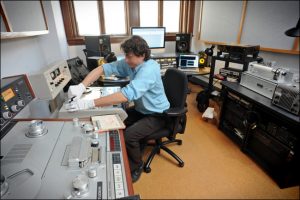 in the past, but we have since more than doubled the amount of streaming content. We’d love to hear your favorites, but as an introduction, we pulled a few recordings from recent additions that we found particularly fascinating. Click on the link to go directly to a streaming audio file:
in the past, but we have since more than doubled the amount of streaming content. We’d love to hear your favorites, but as an introduction, we pulled a few recordings from recent additions that we found particularly fascinating. Click on the link to go directly to a streaming audio file:
- First up from the Andy Cahan Collection (20018), some fantastic tunes performed by musician and folklorist Andy Cahan and Carlie Marion recorded during a July, 1998 visit to Marion’s home in Elkin, NC. There are seven tapes total, any and all are excellent listening but tape 2, side 1 is a great place to start.
- From the Tom Carter and Blanton Owen Collection (20029), stories and twin fiddling by Luther Davis and Huston Caudill recorded in Dalhart, Grayson Co., VA in February 1974. [* note you can also hear a number of recordings of Davis streaming via the Alice Gerrard Collection (20008)]
- Finally, from the Dan and Beverly Bush Patterson Papers (20026), recorded songs and interview with Sister R. Mildred Barker in the Shaker community at Sabbathday Lake, Maine, in August of 1973. Patterson edited two LP collections of Early Shaker Spirituals that featured Sister R. Mildred Barker and other members of the church, including Sister Frances Carr, one of the last remaining members of the Shaker community who passed away on January 2 of this year. The LPs are highly recommended, and so is this interview conducted by Dr. Patterson. [*note around 7:00 where Patterson crosses over into the role of participant by demonstrating the pitch pipe on the recording!]
If you have any questions or comments about accessing streaming media, be sure to contact the Southern Folklife Collection at wilsonlibrary@unc.edu. Stay warm and safe out there!
Video for your Memorial Day Weekend
Greetings from the Audiovisual Preservation and Access team!
Starting today we have another fresh batch of streaming video, so I thought I’d share some highlights gathered from my time reviewing the footage.
Click on any of the images below to view the video they were captured from. All other content mentioned can be found by going directly to the collection link and searching the collection finding aid.
Mike Seeger Collection (20009): Video from various music and dance events in Mt. Airy, NC, an interview with Snuffy Jenkins, recording of Almeda Riddle, and a 1975 broadcast performance with Hazel Dickens, Alice Gerrard, Mike Seeger and Tracey Schwartz
 Almeda Riddle and Mike Seeger deep in thought at Almeda’s home in Greers Ferry, AR on May 3, 1984 (VT-20009/137)
Almeda Riddle and Mike Seeger deep in thought at Almeda’s home in Greers Ferry, AR on May 3, 1984 (VT-20009/137)
William R. Ferris Collection (20367): Interviews with Eudora Welty, Cleanth Brooks, Pete Seeger, and James “Son” Thomas, concert footage of Bobby Rush, and video documentation of Dr. Ferris’ trip down the Mississippi river aboard the Delta Queen
 Bobby Rush in concert at the Hoka in Oxford, MS on July 25, 1987 (VT-20367/31)
Bobby Rush in concert at the Hoka in Oxford, MS on July 25, 1987 (VT-20367/31)
Anne Romaine (20304): Various appearances and concerts with Anne Romaine on auto harp and footage of the Blue Ridge Mountain Dancers
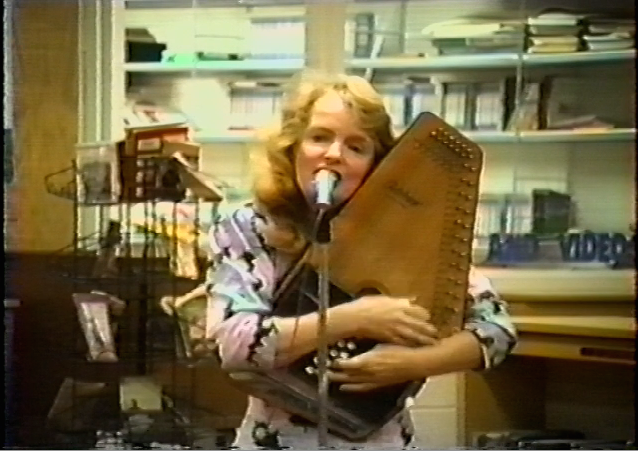 “Take me for a ride in your car car” – Anne Romaine performs for Langly Park-McCormick Elementary school children (VT-20304/14)
“Take me for a ride in your car car” – Anne Romaine performs for Langly Park-McCormick Elementary school children (VT-20304/14)
Archie Green (20002): Video of the Archie Green Symposium held at UNC-Chapel Hill in 2009 and an interview with Archie Green on labor culture in 2001
 Archie Green talking about laborlore in San Francisco on September 20, 2001 (VT-20002/43)
Archie Green talking about laborlore in San Francisco on September 20, 2001 (VT-20002/43)
J Taylor Doggett (20286): Performance by T-Bone Pruitt, tribute to John Tanner, various Five Royales television appearances, and video of the 1992 North Carolina Folk Heritage Awards Ceremony
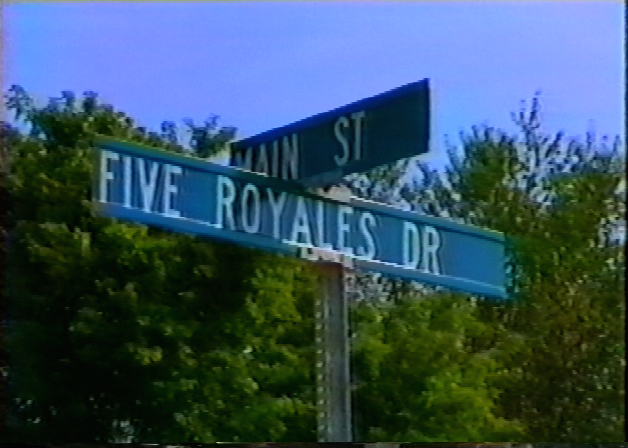 The dedication of Five Royales Drive on August 23, 1991 in Winston-Salem, NC (VT-20286/23)
The dedication of Five Royales Drive on August 23, 1991 in Winston-Salem, NC (VT-20286/23)
In addition to the 4 collections listed above, we have also made available streaming content from the George Hamilton IV (20410) collection, which can be viewed online if you are on campus here at the University of North Carolina – Chapel Hill. This collection contains a number of appearances, interviews, and performances with George Hamilton IV, as well as a handful of Grand Ole Opry shows.
Earlier this month we began streaming videos from the Nancy Kalow and Wayne Martin collection (20047) and the Nancy Kalow Collection (20113), which you can read about in our last post from Aaron here.
Enjoy your weekend! Signing off with another one of my favorites:
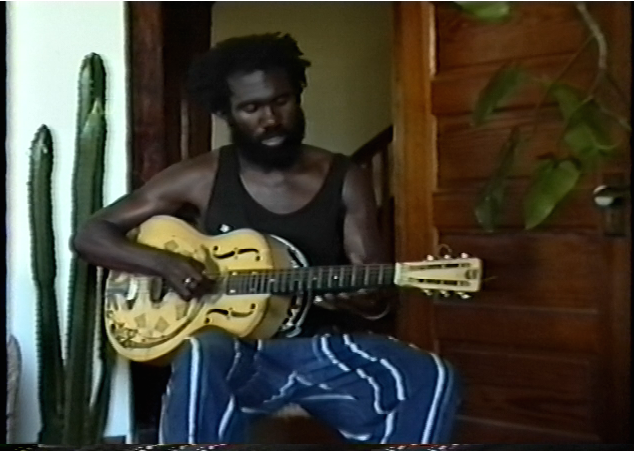 Corey Harris, July 1994 (VT-20009/150, Mike Seeger Collection)
Corey Harris, July 1994 (VT-20009/150, Mike Seeger Collection)



